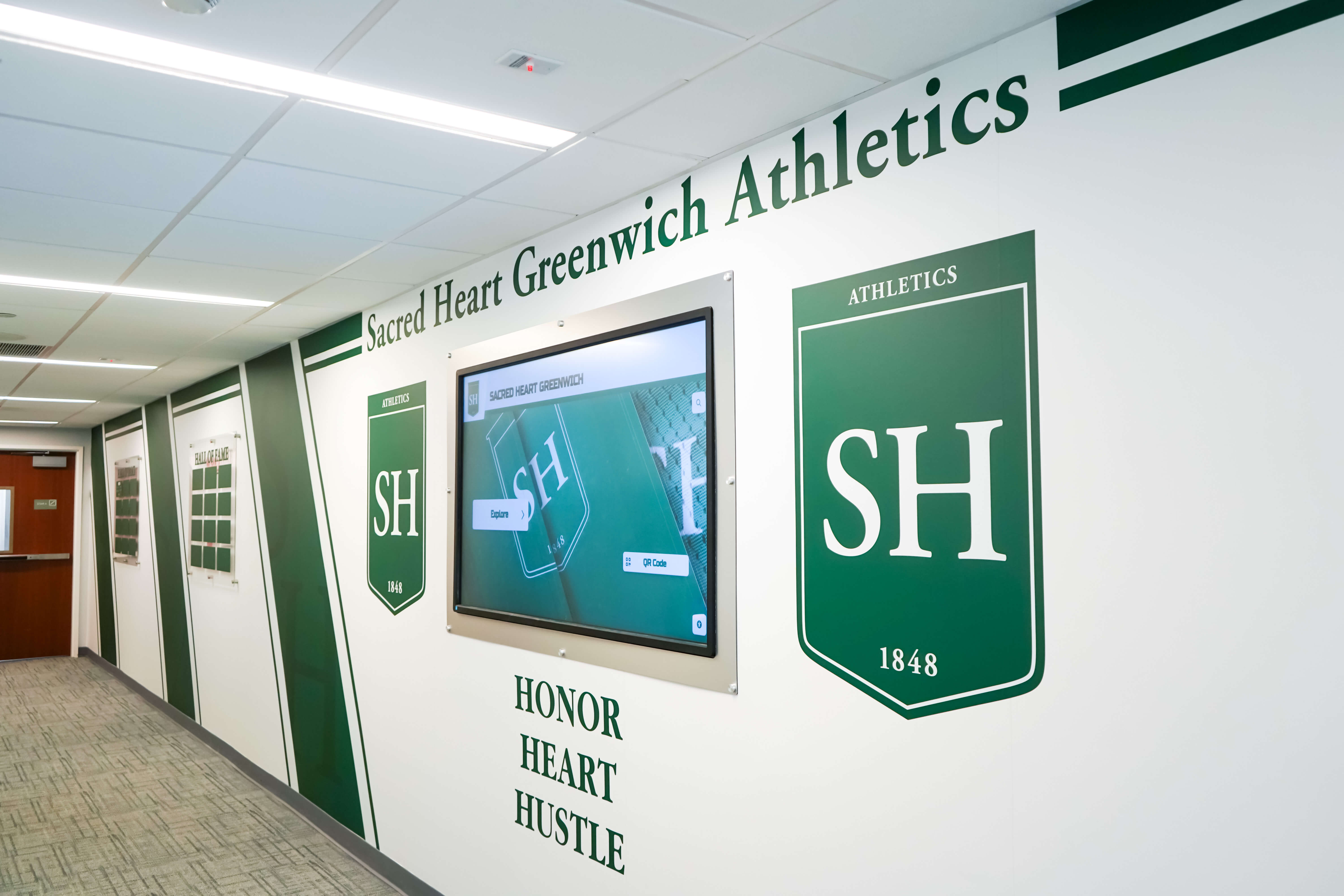Every school has a story worth preserving—decades of student achievements, transformative educators, championship moments, and traditions that define institutional identity. Yet many schools struggle to honor their rich histories effectively, with dusty trophy cases overflowing, yearbooks deteriorating in storage, and countless achievements forgotten simply because no adequate system exists to preserve and celebrate them.
Honoring school history serves critical purposes beyond nostalgia. It builds institutional pride, connects current students with legacy and tradition, engages alumni through visible acknowledgment, inspires future excellence by showcasing past achievements, and creates continuity linking generations of students, staff, and families. Schools that effectively preserve and celebrate their histories create stronger communities, deeper connections, and more vibrant cultures than those allowing institutional memory to fade.
Why Honoring School History Matters
Schools preserving their histories demonstrate commitment to every student, educator, and achievement that contributed to institutional development. This recognition creates powerful connections between past excellence and current aspirations while building the pride that strengthens entire school communities. Solutions like Rocket Alumni Solutions help schools preserve comprehensive histories through digital platforms that make decades of achievements accessible, searchable, and celebrated—transforming forgotten archives into active engagement tools.
Understanding the Value of School History Preservation
Before implementing specific strategies, understanding why school history preservation matters helps ensure efforts align with institutional goals and serve diverse stakeholder needs.
The Psychology of Historical Connection
School history creates powerful psychological benefits for students, staff, and communities:
Identity Formation Through Tradition: Students develop stronger institutional identity when they understand school history and recognize themselves as part of continuing narratives. Knowing that students decades ago walked the same halls, competed in the same sports, and pursued similar dreams creates sense of belonging that transcends individual experience.
Motivation Through Historical Excellence: Visible evidence of past achievements inspires current students to pursue their own excellence. When athletes see record boards documenting decades of championship teams, they aspire to add their names to those honored lists. When scholars discover recognition of past academic achievers, they find motivation to reach similar heights.
Alumni Connection and Engagement: Graduates maintain stronger connections with schools that visibly honor their contributions and achievements. Alumni engagement through digital recognition demonstrates measurable increases in participation, giving, and involvement when institutions demonstrate that past contributions remain valued and visible.
Institutional Credibility and Reputation: Schools showcasing long histories of excellence build credibility with prospective students, families, and communities. Comprehensive historical documentation demonstrates sustained commitment to educational quality across generations—powerful messaging for recruitment and community relations.
Preservation of Diverse Perspectives: Complete school histories honor diverse contributions across different eras, demographics, and achievement types. Inclusive historical recognition demonstrates that excellence comes in many forms and that every contribution to institutional development deserves acknowledgment.
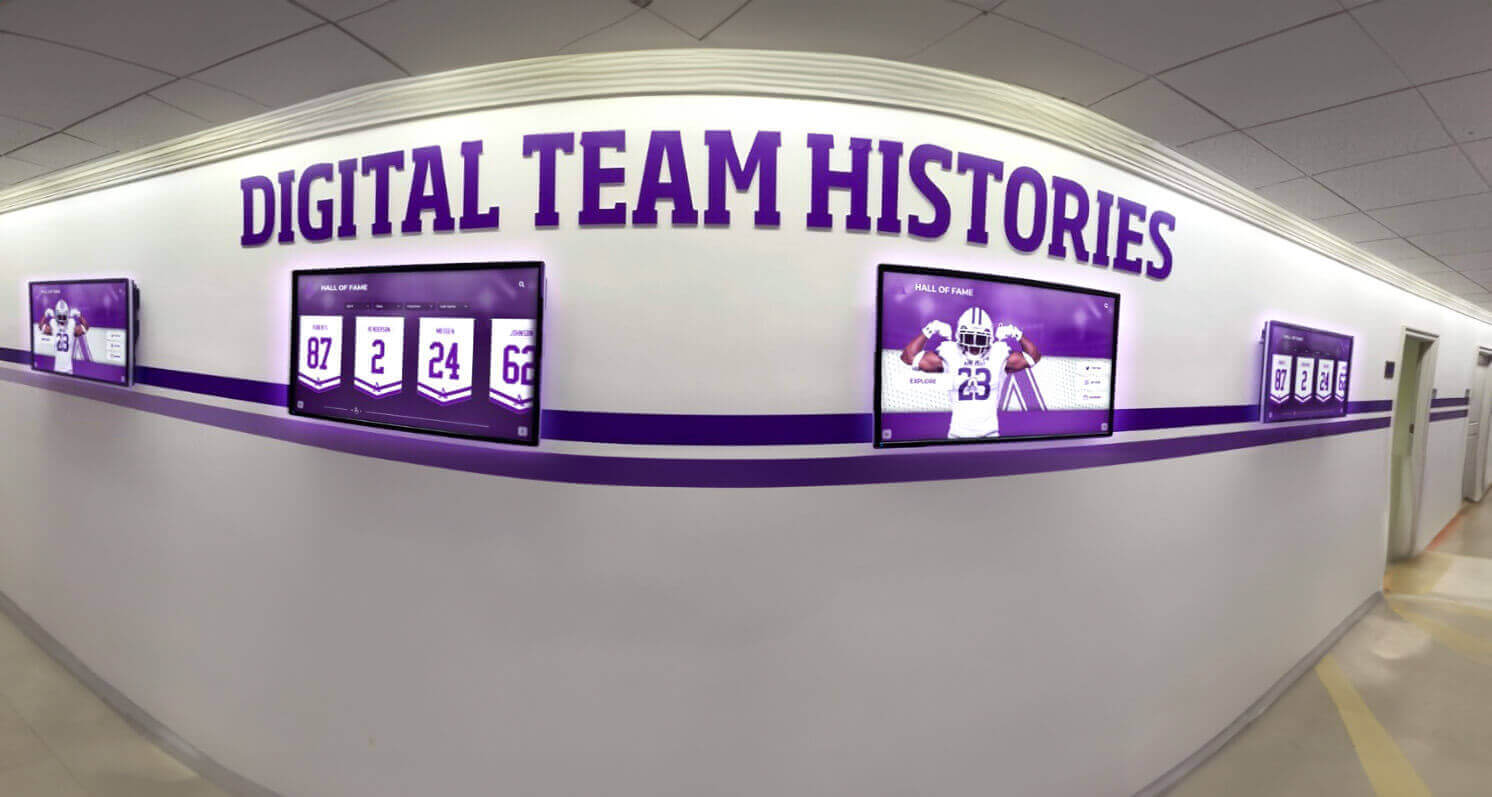
What Gets Lost When History Isn’t Honored
Schools that fail to systematically preserve and honor their histories experience significant losses:
Forgotten Achievements: Without systematic documentation, most achievements fade within a generation. Championship teams become vague memories, record-breaking performances get forgotten, and distinguished alumni receive no recognition. This erasure diminishes institutional richness while discouraging current excellence.
Broken Institutional Memory: Schools lose track of important traditions, significant milestones, and historical context informing current practices. New administrators lack historical perspective, long-serving staff members become sole repositories of institutional knowledge, and transitions result in lost understanding of why certain practices exist.
Weakened Alumni Connections: Graduates who find no visible recognition of their contributions feel less connected to institutions. When alumni visit campuses and discover no acknowledgment of their achievements or their era’s contributions, emotional bonds weaken and engagement declines.
Diminished Current Student Pride: Students take less pride in schools that fail to honor past excellence. Without visible evidence of sustained achievement across decades, current students lack context for understanding their school’s significance and their place within longer institutional narratives.
Lost Fundraising Opportunities: Development offices struggle when unable to document comprehensive institutional histories. Donor cultivation requires demonstrating sustained commitment to excellence, recognizing past contributions, and connecting giving to historical institutional values—all dependent on preserved, accessible historical information.
The Best Ways to Honor School History
Effective school history preservation requires multiple complementary approaches addressing different aspects of institutional memory and engaging diverse audiences.
1. Implement Comprehensive Digital Recognition Displays
Modern digital recognition systems represent the single most powerful tool for honoring school history comprehensively and accessibly.
Unlimited Historical Capacity: Traditional trophy cases and plaque walls face insurmountable space constraints that force difficult choices about what receives recognition. Digital wall of fame systems provide effectively unlimited capacity—thousands of achievements, athlete profiles, team histories, and faculty recognitions fit on single touchscreen displays through organized navigation.
Rich Multimedia Storytelling: Digital platforms enable comprehensive historical storytelling impossible with physical plaques. Schools can integrate historical photographs documenting achievements, video footage of championship moments or historic events, complete career statistics and achievement details, biographical information and post-graduation accomplishments, and oral history recordings from alumni and retired educators. These rich media create emotional connections and engaging narratives that static plaques never achieve.
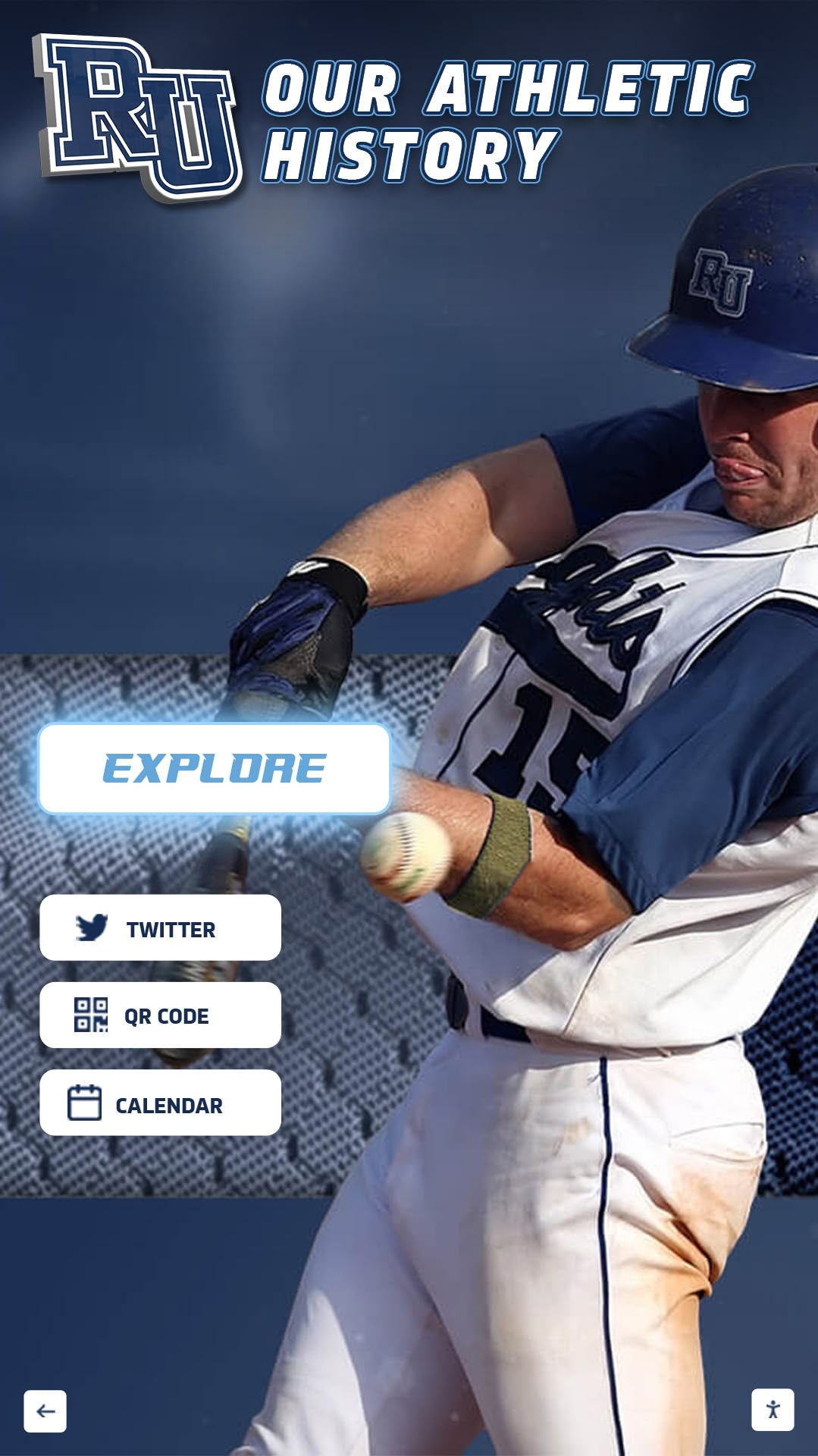
Searchable Databases Spanning Decades: Perhaps the most transformative digital advantage involves searchability. Alumni can instantly locate their names across decades of documentation, parents can find their children’s achievements immediately, researchers can explore specific sports, years, or achievement types efficiently, and visitors can discover connections between different eras and achievements. This searchability transforms passive historical archives into actively used resources generating daily engagement.
Easy Updates Maintaining Currency: Cloud-based content management enables authorized staff to update recognition instantly from any location. New achievements appear immediately while enthusiasm remains high, historical content expands continuously as research uncovers forgotten accomplishments, corrections happen quickly without physical reinstallation, and featured content rotates ensuring diverse recognition visibility.
Remote Accessibility Extending Reach: Web-based platforms ensure alumni anywhere can explore school history, strengthening connections regardless of geographic distance. Graduates share their recognition with family and professional networks, extending institutional visibility while deepening personal pride. Resources on how to modernize recognition walls provide frameworks for transitioning from limited physical displays to comprehensive digital systems.
2. Digitize Complete Yearbook Collections
Yearbooks represent invaluable historical resources documenting school life across decades—but only when accessible.
Preservation Against Physical Deterioration: Physical yearbooks inevitably deteriorate through age, handling, and environmental exposure. Pages yellow, bindings break, photographs fade, and irreplaceable content gradually becomes lost. Digitizing yearbooks creates permanent preservation ensuring these memories survive indefinitely regardless of physical condition.
Universal Accessibility for Alumni: Digital yearbook archives enable graduates anywhere to explore their school years instantly. Alumni can search their names across all yearbooks, browse their graduation year and surrounding years, view class photos and activity group images, read inscriptions and personal messages, and share discoveries with family and friends. This accessibility creates powerful emotional connections strengthening lifelong institutional bonds.
Integration with Recognition Programs: The most effective implementations connect yearbook archives with active recognition displays. Schools can link yearbook photos to athlete profile pages showing complete careers, connect class photos to distinguished alumni recognition, integrate with hall of fame displays documenting achievements, and support teacher appreciation programs celebrating educator tenures.

Research and Educational Applications: Digital yearbook collections support diverse research purposes including local history documentation projects, genealogical research by community members, sociological studies examining education evolution, architectural documentation showing facility changes, and student projects exploring school heritage. Accessible archives transform yearbooks from nostalgic curiosities into active educational resources.
Reunion Planning and Engagement: Class reunion committees find digital yearbooks invaluable for locating missing classmates using yearbook data, creating presentations comparing then-and-now photos, identifying classmates for specific recognition, researching traditions from graduation years, and developing memory-based activities for events.
3. Create Comprehensive Hall of Fame Programs
Formal hall of fame programs provide structured frameworks for honoring the most significant achievements and contributors across institutional history.
Athletic Hall of Fame Recognition: Athletic halls of fame celebrate championship teams, record-breaking athletes, distinguished coaches, and program builders who shaped sports traditions. Comprehensive athletic halls of fame document complete program histories while inspiring current athletes to pursue their own excellence.
Academic Hall of Fame Honors: Balance athletic recognition by celebrating academic excellence through recognition of valedictorians and top scholars, academic competition champions, distinguished researchers and innovators, scholarship recipients and award winners, and graduates achieving notable academic success. Top academic achievements deserve prominence equal to athletic accomplishments.
Distinguished Alumni Recognition: Honor graduates achieving notable success in any field including business and entrepreneurial leadership, public service and civic contribution, arts, entertainment, and cultural achievement, scientific and academic accomplishment, and philanthropic impact and community service. Distinguished alumni recognition demonstrates diverse pathways to excellence while inspiring current students.
Educator and Staff Halls of Excellence: Recognize teachers, administrators, coaches, and staff who shaped institutional development through decades of dedicated service, innovative program development, transformative leadership, mentorship of countless students, and embodiment of institutional values. Resources on teacher appreciation recognition provide frameworks for honoring educators systematically.
Selection Processes Ensuring Credibility: Establish clear nomination and selection criteria, form diverse committees including alumni and community members, implement transparent selection processes, schedule regular induction ceremonies generating excitement, and document selection rationale ensuring historical accuracy.
4. Preserve and Digitize Physical Historical Artifacts
Beyond yearbooks, schools accumulate diverse historical materials requiring systematic preservation.
Trophy and Award Documentation: Physical trophies deteriorate, require extensive space, and eventually get discarded when storage becomes impossible. Digitizing trophies and awards creates permanent records including high-resolution photographs from multiple angles, complete inscription documentation, contextual information about achievements, stories behind significant victories, and integration with broader recognition systems.
Historical Photograph Collections: Systematically preserve photographic documentation of facility evolution and campus development, team photos spanning decades, faculty and staff documentation, significant events and ceremonies, and student life across eras. Organized photo archives provide visual storytelling enriching all other historical preservation efforts.
Newspaper Clippings and Media Coverage: Collect and digitize local newspaper coverage of achievements, regional and national media recognition, game programs and event publications, newsletters and institutional communications, and promotional materials documenting marketing evolution. This documentation provides external perspective on institutional development while capturing community perception across time.

Memorabilia and Ephemera: Preserve uniforms and equipment from significant eras, pennants and spirit items, tickets and programs from milestone events, student artwork and publications, and documents recording institutional decisions. These artifacts tell rich stories about school culture evolution and community identity across generations.
Digital Asset Management Systems: Implement comprehensive platforms organizing all historical materials. Systems supporting digital asset management for schools provide centralized repositories, consistent metadata and tagging, multiple format support, preservation-quality storage, and controlled access protecting privacy while enabling research.
5. Maintain and Enhance Traditional Recognition Elements
While digital systems provide transformative capabilities, thoughtfully maintained traditional elements retain important value.
Historic Trophy Cases and Displays: Selectively preserve and enhance signature trophy cases displaying most significant awards, implement professional lighting showcasing items effectively, maintain clean, organized presentations, rotate displayed items periodically, and integrate QR codes linking physical displays to digital content providing expanded information.
Championship Banners and Signage: Maintain championship banners in athletic facilities, ensure consistent design and quality standards, arrange chronologically showing program evolution, and replace deteriorating banners maintaining visual quality. Well-maintained banners create visual impact digital displays cannot fully replicate.
Memorial and Dedication Plaques: Preserve memorial plaques honoring deceased community members, maintain dedication plaques recognizing facility donors, ensure consistent placement and visibility, keep plaques clean and readable, and document plaque history in digital systems ensuring context preservation.
Traditional Record Boards: While digital record boards offer significant advantages, some schools maintain traditional painted or engraved boards as historical elements. Clean and restore deteriorating traditional boards, create photographic documentation before removal, consider incorporating reproductions in historical displays, and explain tradition evolution to current students.
Hybrid Approaches Combining Best Elements: Many successful programs implement hybrid strategies maintaining selective traditional elements while adding digital capacity. Physical displays provide tangible presence and traditional aesthetics, digital systems offer unlimited additional capacity and searchability, QR codes create connections between physical and digital, and web platforms ensure accessibility beyond campus visits.
6. Establish Living History Programs Connecting Generations
Transform static historical preservation into dynamic programs connecting past and present.
Alumni Speaker Series and Storytelling Events: Invite distinguished alumni to share experiences with current students, organize panel discussions exploring institutional evolution, host reunion activities featuring historical reflections, record oral histories documenting perspectives and memories, and create video archives preserving firsthand accounts. These programs add human dimension to historical documentation while strengthening intergenerational connections.
Student Historical Research Projects: Integrate school history into curriculum through research assignments exploring institutional heritage, oral history projects interviewing alumni and retired staff, digitization projects helping process historical materials, exhibit development synthesizing research findings, and presentation opportunities sharing discoveries with communities. Student involvement builds historical literacy while distributing preservation workload.
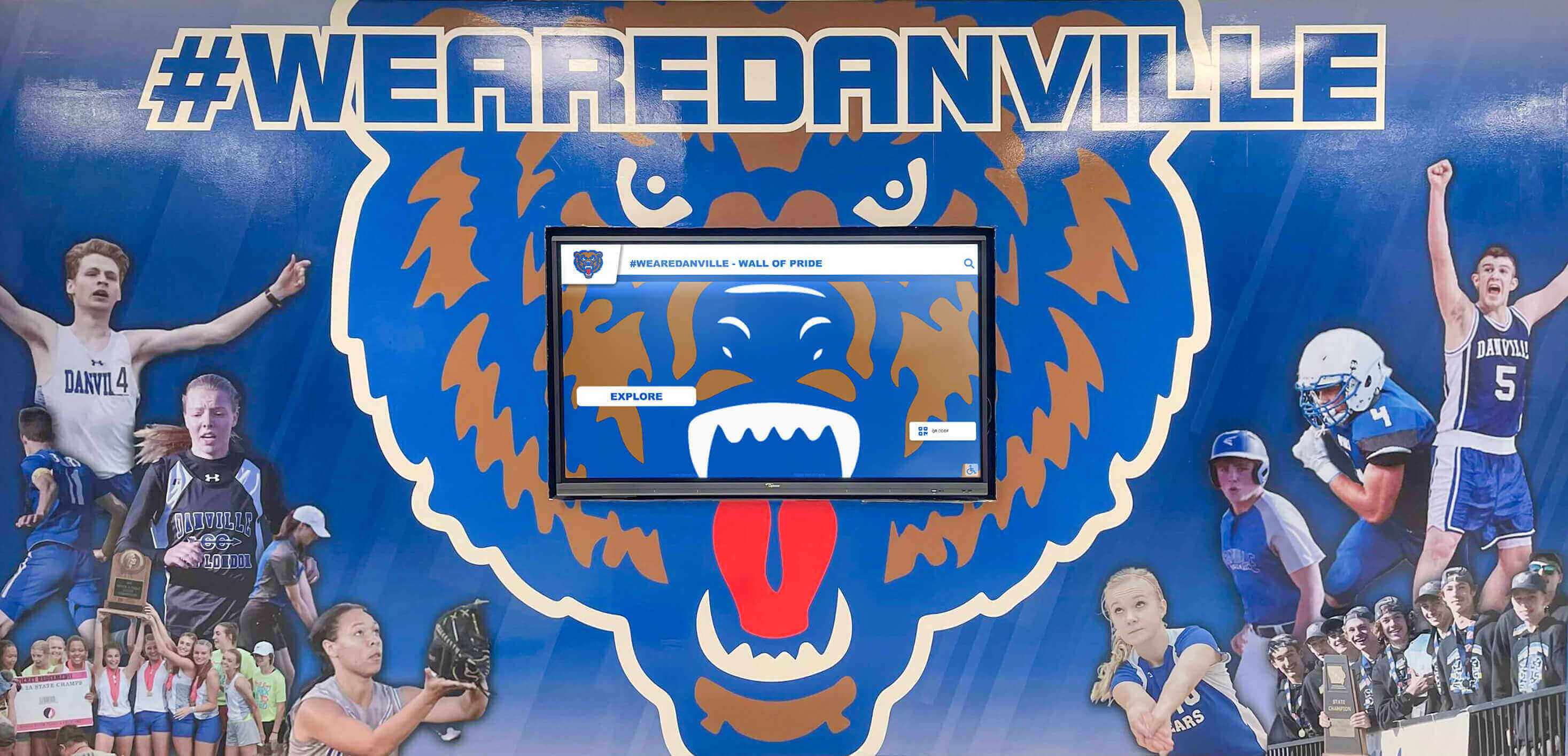
Historical Anniversary Celebrations: Mark significant institutional milestones including founding anniversaries and centennial celebrations, facility dedications and renovations, program anniversaries for sports or academic departments, reunion celebrations for milestone graduation years, and championship anniversary recognitions. These celebrations generate enthusiasm while focusing attention on historical significance.
Mentorship Programs Connecting Eras: Establish formal connections between alumni and current students through career exploration and professional guidance, college selection and application support, leadership development and life advice, athletic coaching and technique sharing, and artistic mentorship in creative fields. These relationships demonstrate ongoing value of school connections while preserving institutional wisdom across generations.
Historical Tours and Orientation Integration: Incorporate school history into new student orientation programs, provide historical tours for prospective students and families, train student ambassadors as history guides, create self-guided historical tour resources, and emphasize historical continuity during recruitment events. Early historical exposure builds foundation for institutional pride and connection.
7. Celebrate and Preserve School Traditions
Traditions create continuity linking current students with decades of predecessors while building shared identity and belonging.
Document Tradition Origins and Evolution: Research and record how major traditions began, document evolution and changes across decades, interview long-serving community members about tradition memories, create written and video documentation of proper tradition observance, and teach tradition significance to each new student generation. Understanding tradition meaning deepens participation quality and emotional connection.
Maintain Signature Annual Events: Preserve homecoming celebrations with consistent elements, continue traditional rivalry games and competitions, maintain graduation ceremony customs, conduct established award and recognition events, and protect service or community engagement traditions. Consistency creates anticipation while connecting current participants with historical precedents.
Honor Traditional School Songs, Cheers, and Symbols: Preserve alma maters and fight songs, document traditional cheers and chants, maintain school colors and mascot consistency, protect official seals and insignia appropriate use, and teach historical significance of each symbol. These elements create visible, audible institutional identity connecting diverse eras.
Create New Traditions Honoring History: While preserving established traditions matters, schools should also develop new traditions that honor history including anniversary commemorations becoming annual events, historical recognition ceremonies, alumni return days focused on heritage, historical exhibition rotations, and storytelling events featuring different eras. New traditions can honor past while creating fresh engagement opportunities. Guidance on increasing school pride through traditions demonstrates how historical awareness strengthens current culture.
8. Develop Comprehensive Archives and Institutional Memory Systems
Systematic documentation ensures historical information remains organized, accessible, and preserved for future generations.
Establish Physical Archive Spaces: Designate climate-controlled storage protecting materials, implement archival-quality storage materials, organize collections systematically by type and era, provide controlled access protecting materials, and create finding aids enabling efficient discovery. Professional archive management ensures physical materials survive long-term.
Implement Digital Archive Platforms: Create centralized digital repositories organizing all historical materials, establish consistent metadata standards, provide powerful search and filter capabilities, ensure cloud-based storage with redundant backups, and enable appropriate public and restricted access. Best software solutions for education records digitization offer specialized features for institutional memory management.

Document Administrative and Policy History: Preserve board meeting minutes and major decisions, document policy evolution and rationale, maintain curriculum development records, record facility planning and construction documentation, and archive strategic plans showing institutional direction evolution. Administrative history provides essential context for understanding current institutional state.
Collect Ongoing Historical Materials: Establish processes for systematic collection including annual yearbook digital copies, event photography and video documentation, media coverage and publicity materials, achievement documentation as occurs, and administrative records per retention schedules. Regular collection prevents historical gaps while distributing preservation workload sustainably.
Engage Archivist Expertise: Consider hiring professional archivists for large collections, consult archival professionals for best practices, join professional organizations accessing resources, follow established archival standards, and learn preservation techniques protecting materials. Professional expertise prevents costly mistakes while ensuring preservation quality.
9. Leverage Technology for Enhanced Historical Access
Modern technology enables historical preservation and access approaches impossible in previous generations.
Virtual Reality Historical Experiences: Create immersive virtual tours of historical facilities, develop VR recreations of significant events, enable virtual “time travel” comparing eras, provide 360-degree views of historical spaces, and create interactive storytelling experiences. Emerging VR technology makes history tangible and engaging for tech-savvy students.
Social Media Historical Sharing: Share throwback content regularly across platforms, create historical comparison posts showing then-and-now, engage alumni through memory-prompting content, encourage community historical contributions, and build hashtags organizing historical discussions. Strategic social media use extends historical awareness beyond those visiting campus.
Mobile Apps Providing Historical Context: Develop apps enabling on-campus historical discovery, implement location-based historical information, create augmented reality historical overlays, provide searchable historical databases, and enable easy social sharing of discoveries. Mobile technology meets users where they naturally engage while providing convenient historical access.
Website Historical Sections: Dedicate website sections to institutional history, create interactive timelines showing evolution, provide searchable achievement databases, enable virtual hall of fame browsing, and share historical stories and features regularly. Strong web presence ensures historical information reaches global audiences.
Data Visualization of Historical Trends: Create visual representations of achievement accumulation over time, show program evolution and growth patterns, illustrate demographic changes across decades, display geographic distribution of alumni, and reveal interesting historical patterns and correlations. Visual data presentation makes historical information accessible and engaging.
10. Build Partnerships Supporting Historical Preservation
Collaborative relationships expand resources and expertise available for comprehensive historical preservation.
Alumni Association Collaboration: Partner with alumni organizations for funding historical preservation projects, collecting historical materials from graduates, organizing historical programming and events, supporting reunion historical elements, and promoting historical awareness. Active alumni associations become powerful historical preservation partners.
Local Historical Society Relationships: Connect with community historical organizations for preservation expertise and guidance, potential archival storage partnerships, combined historical programming, research collaboration, and mutual material sharing. Community connections strengthen both institutional and local historical preservation.
Library and Museum Partnerships: Collaborate with libraries and museums for professional archival guidance, potential preservation grant opportunities, joint historical exhibitions, digitization service access, and technical infrastructure sharing. These partnerships provide expertise and resources many schools lack independently.
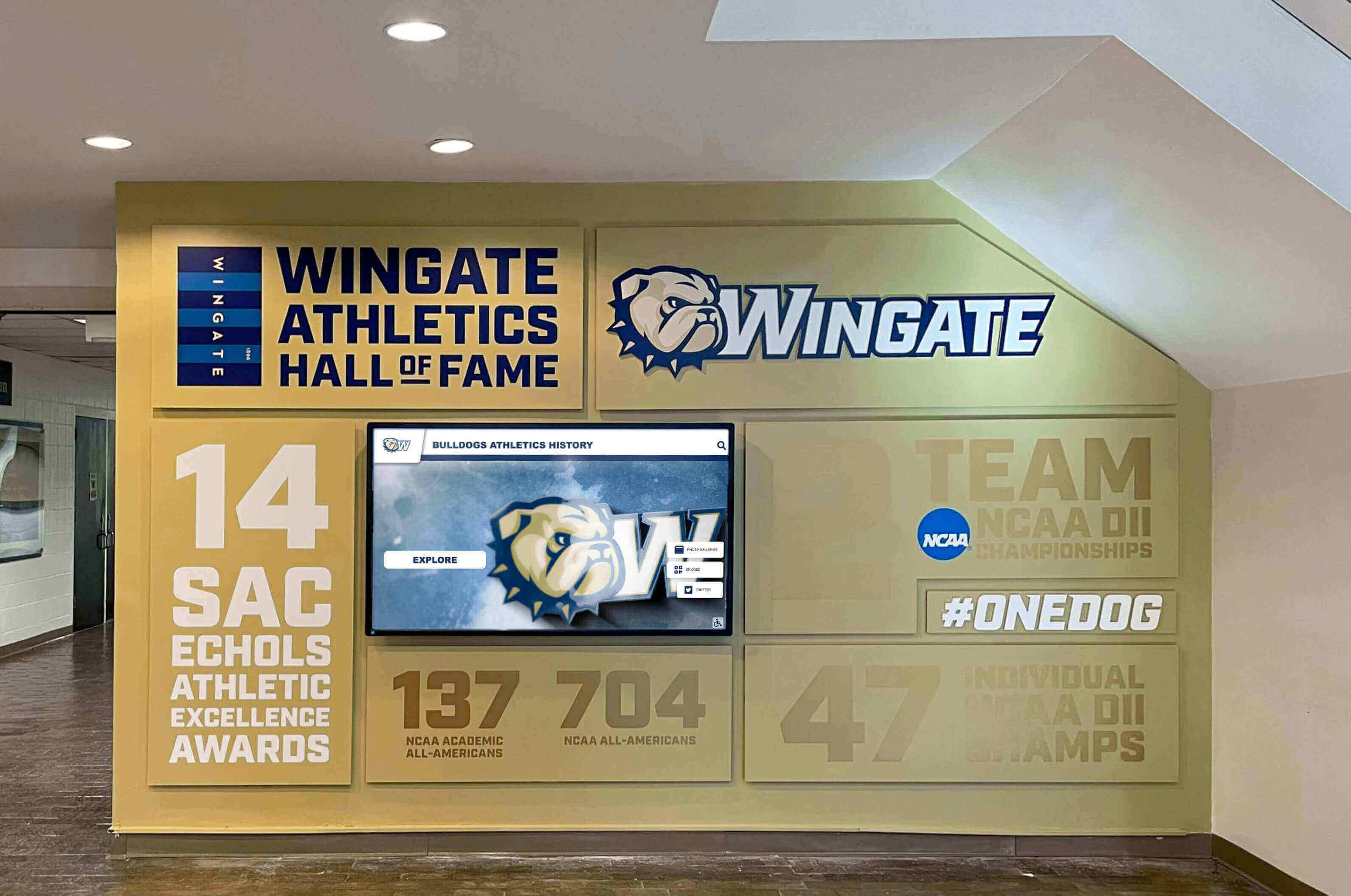
Technology Vendor Relationships: Partner with companies like Rocket Alumni Solutions providing specialized historical preservation platforms, receiving implementation guidance and training, accessing ongoing technical support, benefiting from continuous platform improvements, and joining user communities sharing best practices. Purpose-built technology platforms dramatically simplify comprehensive historical preservation.
Academic Institution Collaborations: Connect with nearby universities offering graduate programs in history, library science, or archival management for student internship and project opportunities, faculty expertise and consultation, research collaborations, and access to specialized equipment and resources.
Implementation Strategy: Getting Started with School History Preservation
Comprehensive historical preservation requires systematic planning and phased implementation balancing ambition with sustainable resource allocation.
Phase 1: Assessment and Planning (Months 1-2)
Begin by understanding your current state and defining clear objectives:
Historical Materials Inventory: Conduct comprehensive surveys of all historical materials including yearbooks, trophies, photographs, documents, memorabilia, and digital assets. Document current storage conditions, organization systems, accessibility, and preservation risks. This inventory reveals both preservation needs and valuable resources.
Stakeholder Input Collection: Gather perspectives from diverse community members including current students and families, alumni from different eras, long-serving staff and faculty, administrators and board members, and local community representatives. These conversations reveal what historical elements matter most to different constituencies.
Objective Definition and Prioritization: Establish clear goals for historical preservation efforts including primary audiences to serve, key stories and achievements to highlight, integration with existing recognition programs, timeline for major milestones, and success metrics for evaluation. Clear objectives guide decision-making while preventing scope creep.
Resource Assessment: Evaluate available resources for historical preservation including budget for technology, digitization, and programs, staff time and expertise, volunteer capacity from alumni or community, physical space for archives and displays, and potential partnerships expanding resources. Realistic resource assessment prevents overcommitment while identifying opportunities.
Phase 2: Foundation Building (Months 3-6)
Establish core systems supporting ongoing historical preservation:
Technology Platform Selection: Research and select appropriate platforms for digital yearbook hosting and archives, interactive recognition displays, digital asset management systems, website historical sections, and mobile or virtual reality applications. Purpose-built platforms like Rocket Alumni Solutions provide comprehensive features specifically designed for educational historical preservation.
Initial Priority Digitization: Begin systematic digitization focusing on highest-priority materials including recent yearbooks with active alumni, at-risk historical materials requiring immediate preservation, materials supporting current recognition projects, and frequently requested historical content. Early wins demonstrate value while building momentum.
Archive Organization Systems: Establish consistent organization frameworks including metadata standards and tagging conventions, file naming and folder structures, access control and privacy protocols, backup and preservation procedures, and documentation of organizational systems. Strong organization enables efficient discovery and sustainable growth.
Initial Recognition Displays: Implement first digital recognition displays or enhanced traditional displays showcasing early digitized historical content, demonstrating system capabilities, generating community excitement, and gathering user feedback informing expansion. Visible early implementations build stakeholder support.
Phase 3: Expansion and Integration (Months 7-18)
Systematically expand historical preservation scope and community engagement:
Comprehensive Historical Content Development: Continue systematic digitization and documentation across complete yearbook collections, comprehensive trophy and award documentation, extensive photograph collections, achievement record completion across decades, and faculty and staff historical documentation. Sustained effort builds increasingly complete historical archives.
Hall of Fame Program Launch: If not existing, establish formal hall of fame including selection criteria and processes, inaugural induction class selection, induction ceremony planning and execution, permanent recognition display implementation, and ongoing nomination and selection cycles. Formal programs provide structure for sustained historical recognition.
Living History Programming: Develop ongoing programs connecting generations including alumni speaker series, student historical research projects, oral history documentation initiatives, historical anniversary celebration planning, and mentorship programs connecting alumni and students.

Expanded Technology Implementation: Add recognition displays in additional locations, enhance website historical sections, develop mobile apps or virtual experiences, implement social media historical sharing strategies, and create data visualization and interactive elements.
Community Engagement and Promotion: Actively promote historical resources through school communications highlighting historical content, media coverage of historical milestones, alumni outreach encouraging engagement, reunion integration showcasing resources, and prospective student recruitment emphasizing heritage.
Phase 4: Sustainment and Evolution (Ongoing)
Maintain long-term commitment ensuring historical preservation remains active institutional priority:
Ongoing Content Addition: Establish regular processes for adding new content annually, continuously expanding historical depth, correcting errors and filling gaps, incorporating newly discovered materials, and updating technology platforms with enhancements.
Assessment and Improvement: Monitor usage analytics understanding engagement, gather stakeholder feedback on effectiveness, measure achievement of objectives, identify improvement opportunities, and adjust strategies based on learning.
Resource Allocation: Maintain sustainable budgets for technology licensing and support, ongoing digitization work, program operations, and future enhancements. Consistent resource allocation prevents abandonment after initial enthusiasm fades.
Succession Planning: Document processes and systems ensuring continuity during transitions, train multiple staff members on all systems, maintain relationships with technology and service providers, preserve institutional knowledge about collections, and ensure historical preservation survives leadership changes.
Measuring Success: Impact of School History Preservation
Effective historical preservation delivers measurable benefits across multiple dimensions:
Engagement Metrics
Track concrete indicators of historical preservation impact:
- Digital display interaction counts and duration
- Website historical section traffic and page views
- Yearbook digital archive searches and downloads
- Social media historical content engagement
- Reunion attendance and alumni participation
- Research requests and historical inquiry volume
- Student project engagement with historical resources
Qualitative Feedback
Gather stakeholder perspectives revealing experiential value:
- Alumni testimonials about reconnection and pride
- Student reflections on historical learning and inspiration
- Parent observations about family connections
- Teacher reports on curriculum integration
- Community recognition of institutional commitment
- Media coverage highlighting heritage celebration
Institutional Benefits
Assess broader impacts supporting strategic goals:
- Enhanced recruitment demonstrating sustained excellence
- Increased alumni giving and engagement
- Stronger school pride and student belonging
- Improved community relationships and visibility
- Protected institutional memory and continuity
- Differentiated brand identity and reputation
Resources on community impact of recognition walls demonstrate measurable benefits extending beyond historical preservation to comprehensive community strengthening.
Conclusion: Preserving Yesterday to Inspire Tomorrow
School history represents far more than nostalgic collections of fading photographs and dusty trophies—it embodies the collective achievement, shared values, and continuing narrative connecting every individual who contributes to institutional development. When schools systematically preserve and celebrate their histories, they honor every student who excelled, every educator who shaped minds, every team that achieved greatness, and every graduate who carries institutional identity into broader communities.
The best approaches to honoring school history combine modern technology with traditional elements, systematic digitization with engaging programming, comprehensive preservation with selective showcasing, and professional systems with volunteer enthusiasm. Digital recognition platforms like Rocket Alumni Solutions provide the technological foundation for comprehensive historical preservation, while thoughtful programming and community engagement transform archived content into active cultural resources strengthening institutional pride and connection.
Whether addressing overflowing trophy cases, deteriorating yearbooks, forgotten achievements, or simply recognizing opportunities to leverage institutional heritage more effectively, the strategies outlined in this guide provide frameworks for action. Schools can implement phased approaches matching available resources while building toward comprehensive historical preservation serving diverse audiences across generations.
Every school has a story worth preserving. Every achievement deserves recognition. Every student, educator, and graduate contributes to institutional development in ways that merit lasting acknowledgment. When schools commit to honoring their histories comprehensively and accessibly, they demonstrate that every contribution matters, every moment of excellence remains valued, and every participant in school community belongs to something larger than themselves—a continuing tradition of excellence spanning generations and extending into unlimited futures.
Start honoring your school history today. Your current students will discover inspiration in past achievements. Your alumni will find renewed connection through visible recognition. Your community will take pride in documented excellence. And future generations will benefit from institutional memory preserved and celebrated for their discovery and inspiration.
